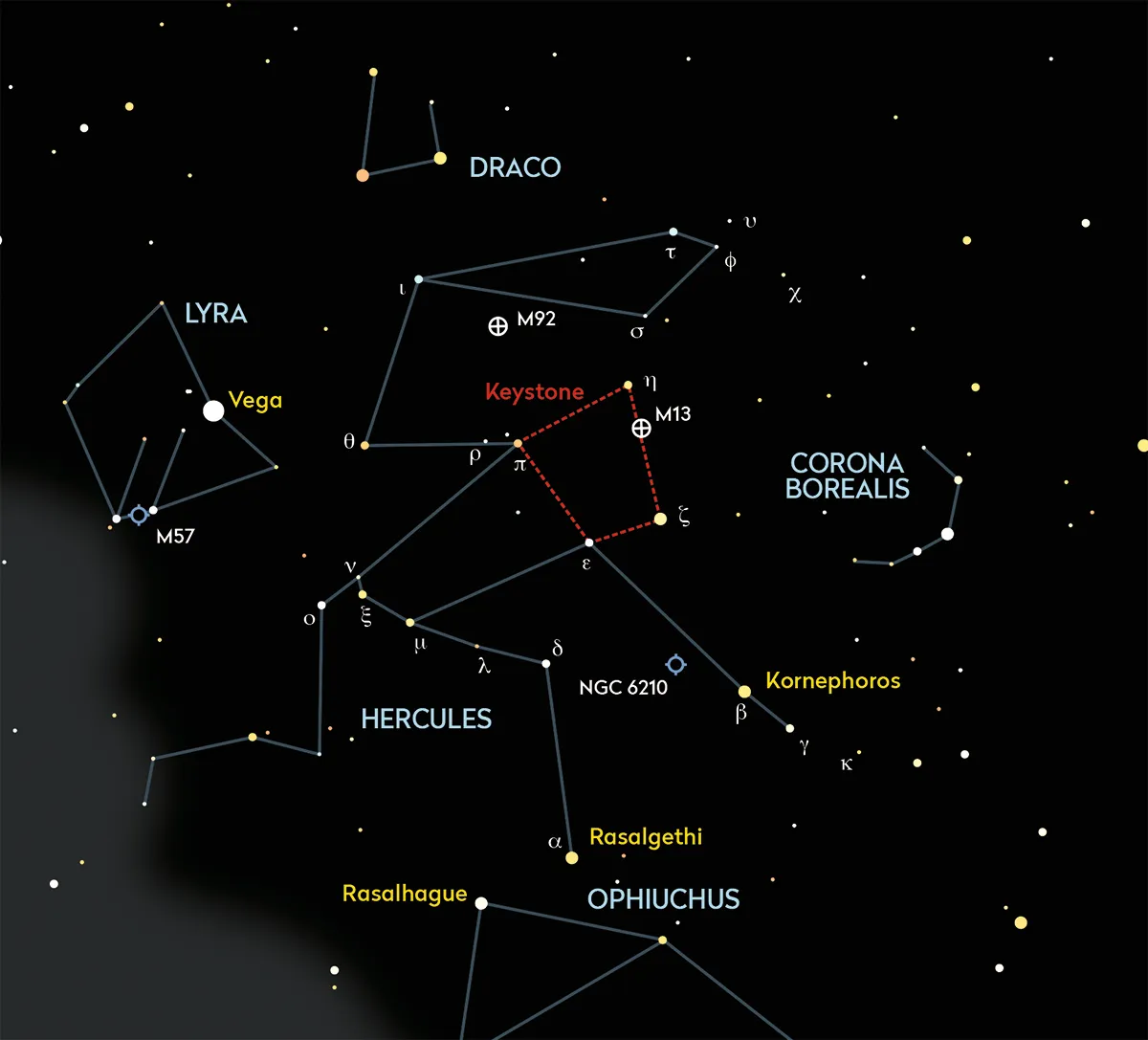Have you ever heard about the propeller formation in M13, the Great Globular Cluster in Hercules?
For casual observers, there’s a belief that globular clusters all look quite similar in appearance.
However, more seasoned globular hunters know this is definitely not the case.
The classic Northern Hemisphere globular known as M13, the Great Globular in Hercules, is a case in point.
Core concentration, brightness, size, shape and the ability to be partly resolved all help to create distinctions between globulars.
There are other features too, and a good challenge is to view M13 and try to find its most characteristic feature: the propeller.

What is the M13 propeller?
The propeller is a pattern offset to the southeast side of the core of M13 that appears as three dark dust lanes converging to a common point.
The lanes are offset from one another by 120° and it’s this regularity that produces the pattern reminiscent of a propeller.
The feature was originally reported by Bindon Stoney around 1850, an astronomer assisting William Parsons, the 3rd Earl of Rosse at Birr Castle in Parsonstown, Ireland.
His initial drawing of the propeller greatly exaggerated its contrast, making it look like an easy-to-see, stand-out part of the globular.

How to observe the propeller in M13
In reality, the M13 propeller is easy to miss unless you know it’s there and where it’s located.
It helps if you have a bit of aperture to hand to pull in as much light as possible, but if not it’s still worth giving it a go.
Magnification is key here and the strategy we’d recommend is to locate M13 at low power, then keep swapping for higher-power eyepieces until you reach the best, high-powered view possible.
For the best chance of spotting the propeller, wait until M13 is high in the sky.
Locating and photographing M13

M13 is an easy Messier object to find using the faint but distinctive Keystone asterism in Hercules.
Once you’ve found that, M13 is located at a point one-third of the way along the line from the northwest corner towards the southwest corner, that’s from Eta (η) towards Zeta (ζ) Herculis.
It’s bright enough to just about be visible to the naked eye from a dark-sky site.
Being big and bright, M13 is a commonly photographed globular.
As such you’d think the propeller was well covered in images, but this isn’t the case.
Over-exposure of the core of M13 will hide it very well, so special consideration needs to be made to avoid doing this.
Be aware, though, that under-exposing M13 may not capture enough of the object to show the propeller at all!
If you observe or photograph the propeller in M13, let us know by emailing contactus@skyatnightmagazine.com

